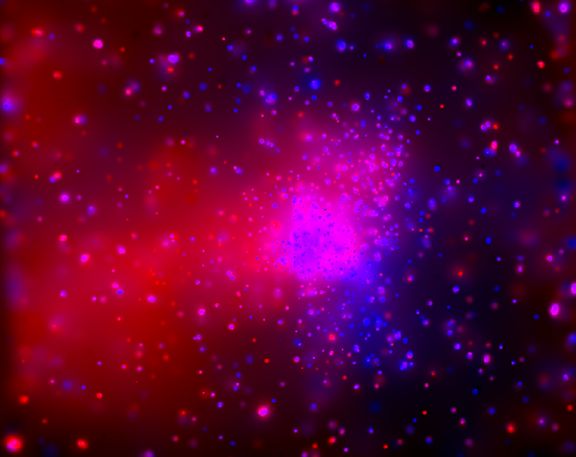Explanation: About 5,000 light-years away, toward the constellation Sagittarius and the center of our galaxy, lies the bright star forming region cataloged as M17. In visible light, M17's bowed and hollowed-out appearance has resulted in many popular names like the Horseshoe, Swan, Omega, and Lobster nebula. But what has sculpted this glowing gas cloud? This Chandra Observatory image of x-rays from M17 provides a clue. Many massive young stars are responsible for the pink central region of the false-color x-ray picture, their colliding stellar winds producing the multimillion degree gas cloud which extends ten or so light-years to the left. When compared with visible light images, this x-ray hot cloud is partly surrounded by the nebula's cooler gas. In fact, having carved out a central cavity the hot gas seems to be flowing out of the horseshoe shape like champagne from an uncorked bottle ... suggesting yet another name for star forming region M17.
1999 2000 2001 2002 2003 2004 2005 2006 2007 2008 2009 2010 2011 2012 2013 2014 2015 2016 2017 2018 2019 2020 2021 2022 2023 2024 2025 |
Yanvar' Fevral' Mart Aprel' Mai Iyun' Iyul' Avgust Sentyabr' Oktyabr' Noyabr' Dekabr' |
NASA Web Site Statements, Warnings, and Disclaimers
NASA Official: Jay Norris. Specific rights apply.
A service of: LHEA at NASA / GSFC
& Michigan Tech. U.
|
Publikacii s klyuchevymi slovami:
M 17 - emission nebula - star formation - rentgenovskoe izluchenie - emissionnaya tumannost' - zvezdoobrazovanie
Publikacii so slovami: M 17 - emission nebula - star formation - rentgenovskoe izluchenie - emissionnaya tumannost' - zvezdoobrazovanie | |
Sm. takzhe:
Vse publikacii na tu zhe temu >> | |
